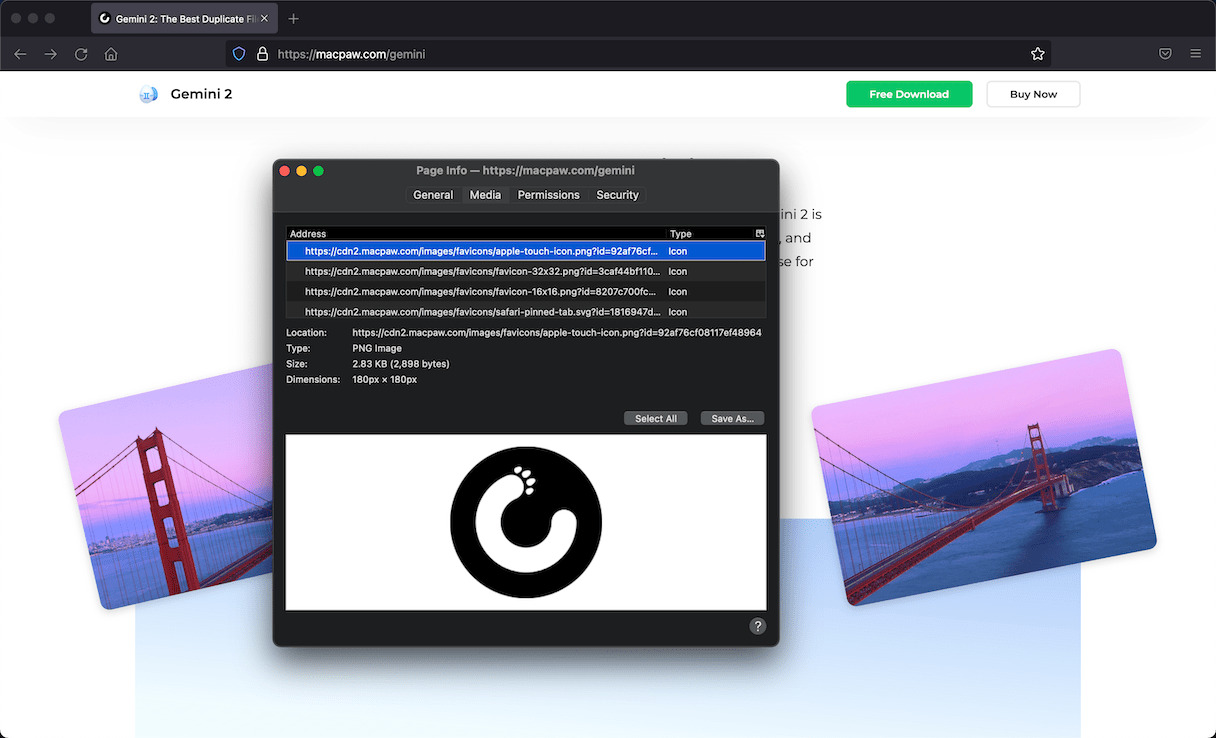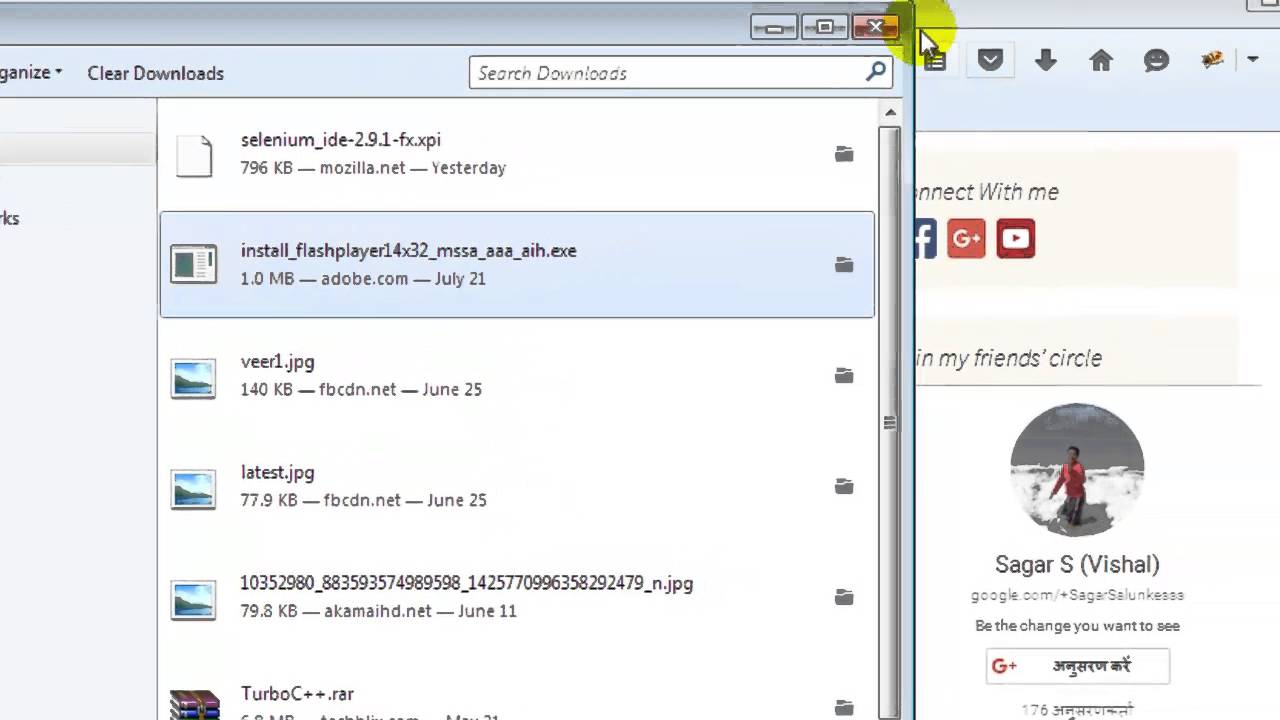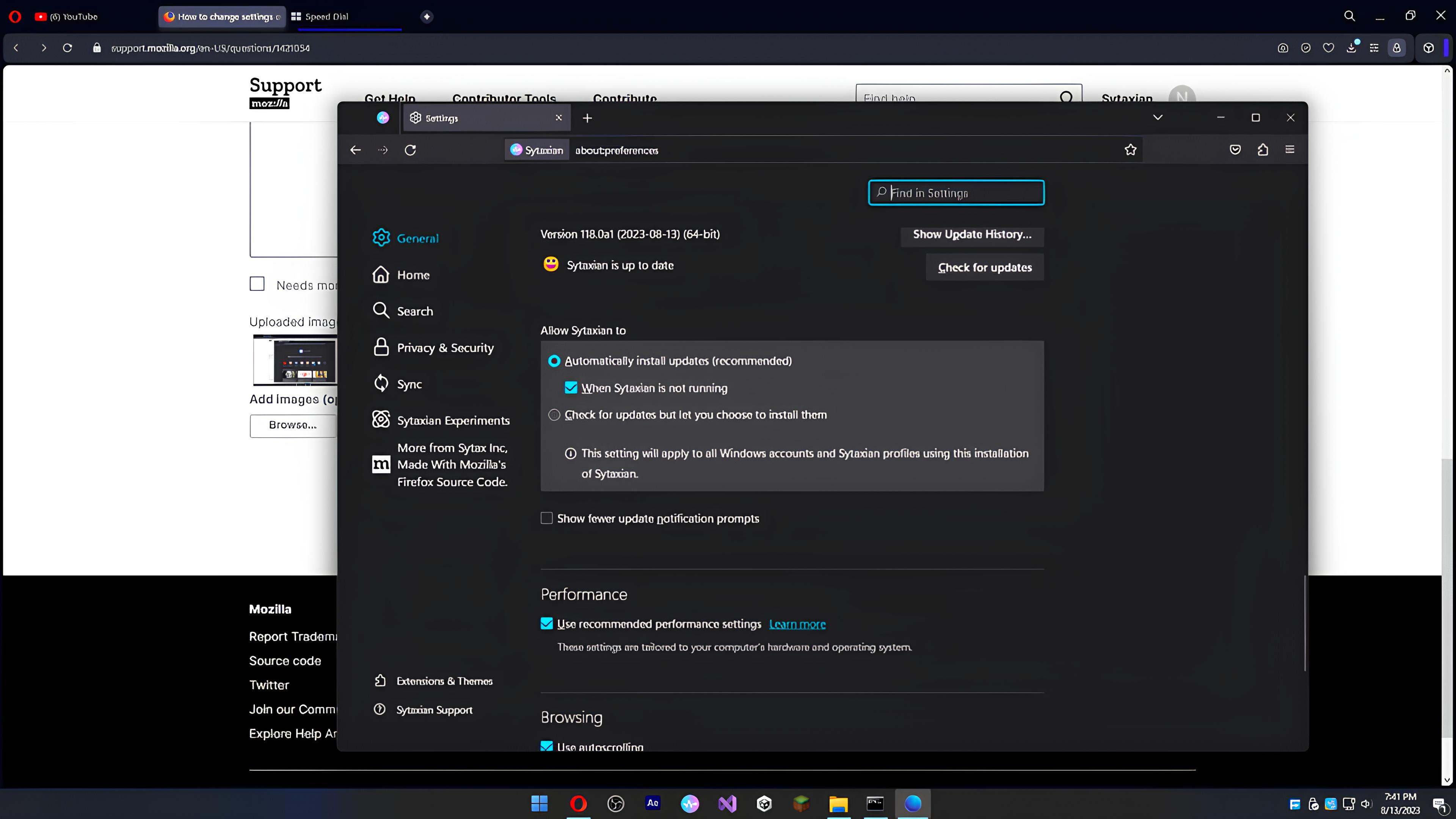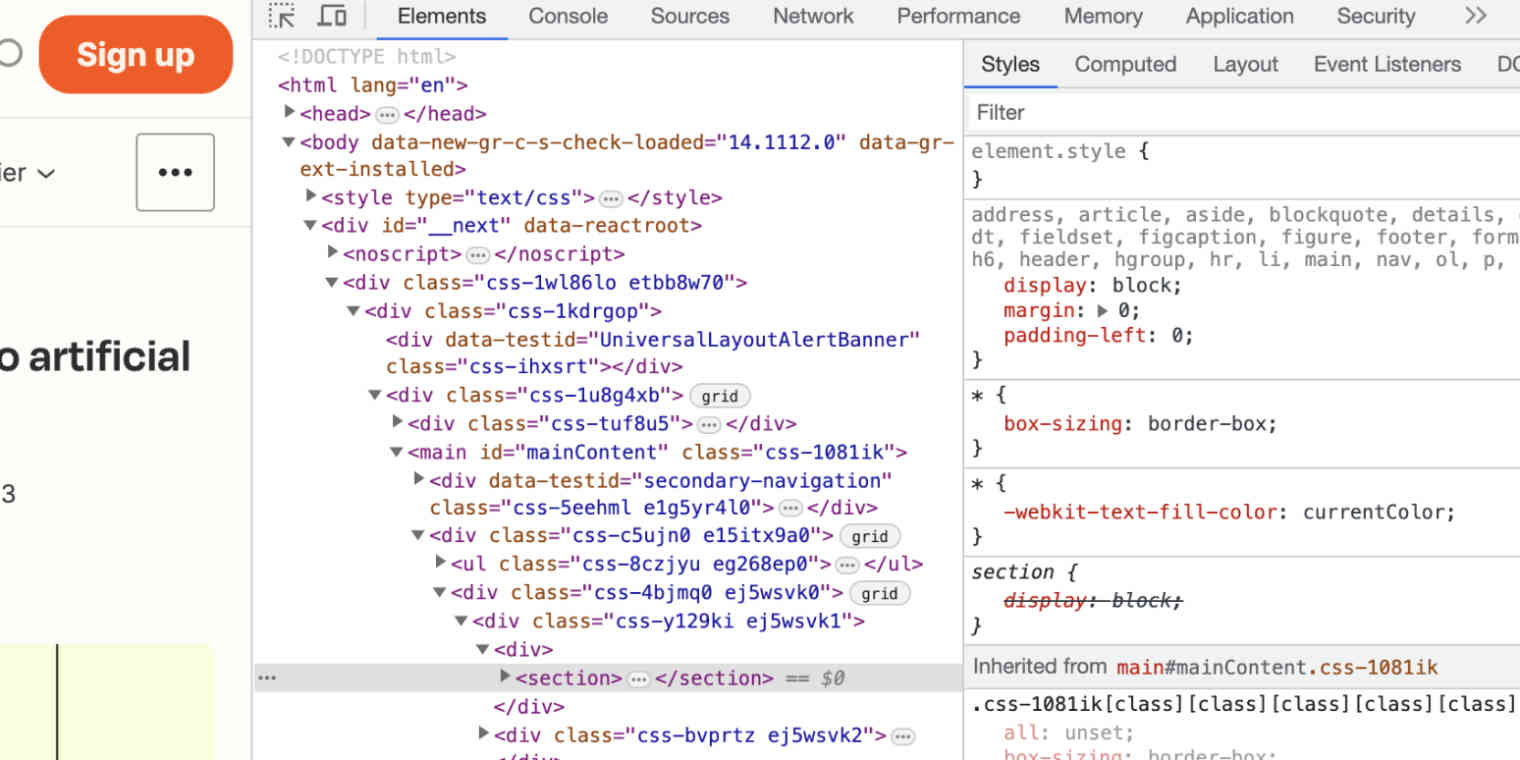Introduction
Saving images from the web is a common task for many internet users. Whether it's a captivating photograph, an informative infographic, or a humorous meme, the ability to save images from web pages is a valuable feature of web browsers. Firefox, one of the most popular web browsers, offers a simple and intuitive process for saving images. In this article, we will explore the step-by-step guide on how to save an image in Firefox. By following these instructions, you can effortlessly save your favorite images to your computer for future use.
Whether you're a professional designer, a student working on a project, or simply someone who enjoys collecting inspiring visuals, knowing how to save images in Firefox can streamline your online experience. With just a few clicks, you can store images directly to your computer, eliminating the need to take screenshots or use third-party tools. This convenient feature not only saves time but also ensures that you have easy access to the images you love.
In the following sections, we will delve into the specific steps required to save an image in Firefox. From right-clicking on the image to choosing the destination folder and optionally renaming the image, each step is designed to be user-friendly and efficient. By the end of this guide, you will have a clear understanding of the process and be able to save images from Firefox with confidence.
So, whether you're browsing through a gallery of stunning landscapes, researching visual references for a project, or simply wanting to save a funny meme, this guide will equip you with the knowledge to effortlessly save images from Firefox. Let's dive into the step-by-step process and unlock the convenience of saving images directly from your favorite web browser.
Step 1: Right-click on the Image
To initiate the process of saving an image in Firefox, the first step is to right-click on the image that you wish to save. When you come across an image that catches your eye while browsing the web, simply position your cursor over the image and perform a right-click using your mouse or trackpad. This action will prompt a contextual menu to appear, providing you with a set of options related to the image.
Upon right-clicking, you will notice a dropdown menu displaying various choices, including options for interacting with the image. This menu is where you can access the necessary functions to save the image to your computer. The ability to right-click on an image and access this menu is a fundamental aspect of web browsing, allowing users to perform specific actions based on the content they encounter.
By right-clicking on the image, you are signaling to the browser that you want to take action related to the selected image. This simple yet powerful gesture serves as the gateway to a range of functionalities, including the ability to save, copy, or inspect the image. In the context of saving an image, the right-click action sets the stage for the subsequent steps that will enable you to store the image locally on your computer.
The act of right-clicking on an image in Firefox is a foundational interaction that empowers users to engage with web content in meaningful ways. It represents the starting point for various actions and commands, offering a convenient and accessible means of interacting with images and other elements on web pages. With this initial step completed, you are now ready to proceed to the next stage of the process, which involves selecting the "Save Image As" option from the contextual menu.
By mastering the art of right-clicking on images in Firefox, you can seamlessly navigate the web and harness the full potential of the browser's image-saving capabilities. This foundational skill sets the groundwork for efficient and intuitive interactions with online visuals, empowering you to curate and save images that resonate with you.
Step 2: Select "Save Image As"
After successfully right-clicking on the image, the next crucial step in saving an image in Firefox is to select the "Save Image As" option from the contextual menu. This action triggers a pivotal transition from viewing the image within the browser to initiating the process of saving it to your computer. By choosing the "Save Image As" option, you are signaling your intent to retain a local copy of the image, ensuring that it is readily accessible for future use.
Upon right-clicking on the image, you will notice a dropdown menu appearing adjacent to the cursor, presenting a range of options for interacting with the image. Among these options, the "Save Image As" command stands out as the gateway to preserving the image on your computer. By selecting this option, you are essentially instructing the browser to facilitate the download of the image, enabling you to specify the destination folder and file name for the saved image.
The "Save Image As" function empowers you with the flexibility to determine the location on your computer where the image will be stored. This level of control ensures that you can organize your saved images according to your preferences, making it easier to retrieve them when needed. Additionally, the ability to rename the image during the saving process allows you to assign a meaningful and descriptive file name, enhancing the image's manageability within your local storage.
By selecting "Save Image As," you are taking an active role in managing the content you encounter on the web, transforming a digital image into a tangible asset within your personal collection. This action embodies the seamless integration of web browsing and local file management, bridging the gap between online content and your computer's storage system. Whether you are saving an image for reference, inspiration, or entertainment, the "Save Image As" feature in Firefox streamlines the process with user-friendly precision.
The act of selecting "Save Image As" represents a pivotal moment in the journey of capturing and preserving online visuals. It marks the transition from ephemeral online content to enduring local assets, empowering you to curate a personalized library of images that resonate with you. With this step completed, you are now poised to proceed to the next stage of the process, where you will define the destination folder for the saved image and, if desired, rename the file to suit your preferences.
By embracing the "Save Image As" functionality in Firefox, you are harnessing the power to seamlessly integrate web content into your personal digital environment, enriching your browsing experience with the ability to curate and retain the images that matter to you.
Step 3: Choose the Destination Folder
Once you have selected the "Save Image As" option, Firefox presents you with the crucial task of choosing the destination folder for the saved image. This step empowers you to define the specific location on your computer where the image will be stored, ensuring that it is seamlessly integrated into your local file structure for easy access and organization.
When the "Save Image As" dialog box appears, you are prompted to navigate through your computer's directory to identify the ideal destination for the image. This intuitive interface allows you to explore your computer's folders and drives, granting you the freedom to select a location that aligns with your preferred file organization strategy.
By offering the flexibility to choose the destination folder, Firefox enables you to tailor the storage location according to your unique preferences. Whether you opt to save the image in a pre-existing folder related to a specific project, category, or theme, or create a new folder dedicated to images saved from the web, this step empowers you to exercise precise control over the organization of your digital assets.
The ability to choose the destination folder is not only practical but also strategic. It allows you to seamlessly integrate the saved image into your existing file structure, ensuring that it is logically positioned alongside related content. This level of organization facilitates efficient retrieval and management of saved images, streamlining your workflow and enhancing your overall browsing experience.
Moreover, the process of choosing the destination folder in Firefox is designed to be user-friendly and intuitive, catering to users of varying technical proficiencies. Whether you are a seasoned computer user or a novice navigating through your computer's directories, Firefox's interface simplifies the task of selecting the ideal storage location for the saved image.
By embracing the responsibility of choosing the destination folder, you are actively shaping the digital environment in which your saved images reside. This deliberate action empowers you to curate a personalized repository of web-sourced visuals, ensuring that they are seamlessly integrated into your local file structure for convenient access and management.
With the destination folder selected, you are now prepared to proceed to the next step, where you have the option to rename the image, providing it with a distinctive and meaningful file name that aligns with your preferences and enhances its manageability within your digital collection.
Step 4: Rename the Image (Optional)
Upon selecting the destination folder for the saved image, Firefox offers you the optional yet valuable opportunity to rename the image before finalizing the saving process. This step allows you to assign a distinctive and descriptive file name to the image, enhancing its manageability and relevance within your local storage.
The act of renaming the image is a strategic and empowering endeavor. By providing the image with a meaningful and contextually relevant file name, you are actively shaping its identity within your digital collection. This personalized approach not only facilitates easier identification and retrieval but also imbues the image with a sense of purpose and significance within your curated library of saved visuals.
When presented with the option to rename the image, you have the creative freedom to craft a file name that resonates with the content of the image, its intended use, or any specific attributes that make it noteworthy. Whether you opt to incorporate descriptive keywords, project-specific identifiers, or thematic tags into the file name, this step enables you to infuse the image with contextual relevance, making it more discoverable and impactful within your local file structure.
Moreover, the process of renaming the image in Firefox is designed to be user-friendly and intuitive, catering to users of varying technical proficiencies. The interface allows you to seamlessly edit the file name, providing a seamless experience that empowers you to exert precise control over the naming process. This level of customization ensures that the image is endowed with a distinctive identity that aligns with your preferences and enhances its overall significance within your digital repository.
By embracing the opportunity to rename the image, you are actively contributing to the meaningful curation of your personal collection of saved visuals. This deliberate action empowers you to infuse each image with a sense of individuality and relevance, ensuring that it seamlessly integrates into your local file structure and remains readily accessible for future reference and use.
With the image optionally renamed, you are now prepared to proceed to the final step, where you will confirm the saving process by clicking "Save," thereby securing the image in your chosen destination folder with its customized file name.
Step 5: Click "Save"
After selecting the destination folder and optionally renaming the image, the final step in the process of saving an image in Firefox is to click the "Save" button. This decisive action serves as the culmination of your efforts to retain a local copy of the image, solidifying its place within your computer's storage system. By clicking "Save," you are signaling your confirmation of the chosen destination and file name, initiating the download process that securely transfers the image to your specified location.
The act of clicking "Save" represents a pivotal moment in the journey of capturing and preserving online visuals. It signifies the transition from a digital image displayed within the confines of a web page to a tangible asset residing within your personal collection. This deliberate action empowers you to take ownership of the image, ensuring that it is seamlessly integrated into your local file structure for convenient access and management.
Moreover, the process of clicking "Save" in Firefox is designed to be straightforward and user-friendly, catering to users of varying technical proficiencies. The interface presents the "Save" button as a clear and intuitive command, inviting you to confirm your choices and proceed with the image-saving process. This seamless experience ensures that you can effortlessly execute the final step, securing the image in your chosen destination folder with its customized file name.
By clicking "Save," you are affirming your intent to retain the image for future use, whether for reference, inspiration, or entertainment. This affirmative action marks the completion of the image-saving process, culminating in the successful preservation of the image within your personal digital environment. With the image securely saved to your computer, you can proceed with confidence, knowing that it is readily accessible for your desired purposes.
In essence, the act of clicking "Save" in Firefox represents the culmination of your agency in managing online content, transforming transient digital visuals into enduring assets within your local file structure. This final step ensures that the image is seamlessly integrated into your personal collection, ready to enrich your browsing experience and serve as a valuable resource in your digital endeavors.

























